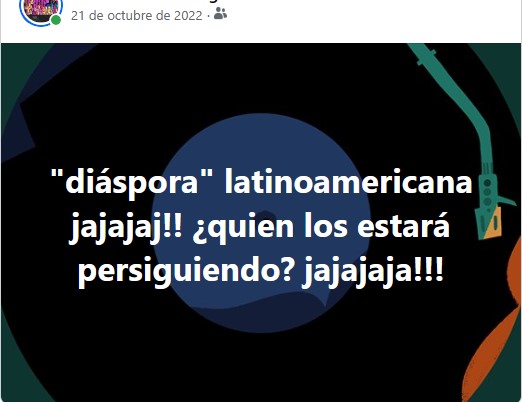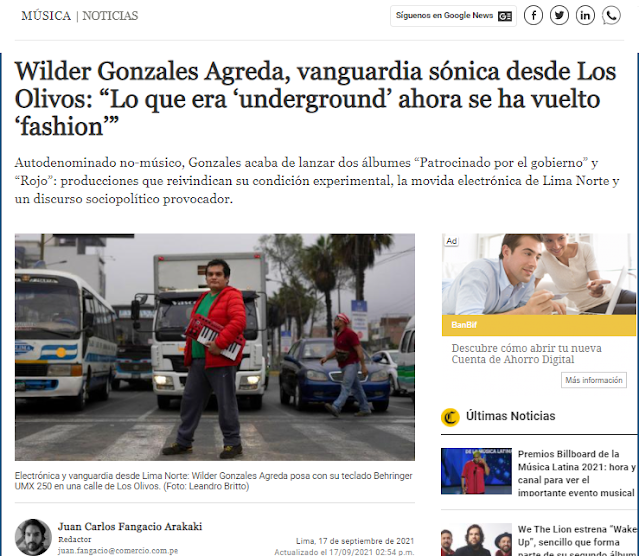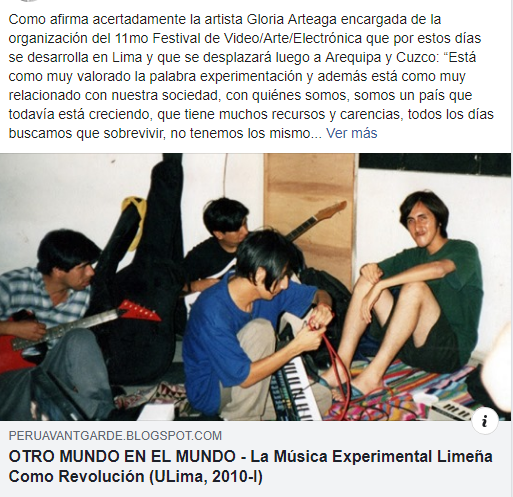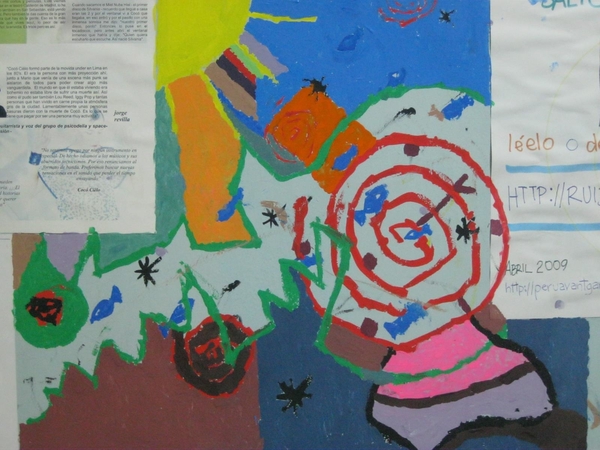/Forthcoming AMP Entangled Time/
Finally after many twists and turns, a new Amp record is being released digitally on the 23rd Nov 2018. Other formats will follow in the new year, we have teamed up with the Sound in Silence label again for a ltd ed Cdr version and we will be making a 10” lathe cut of the 2 main tracks. We will be launching a Pledge Music campaign shortly to release a Ltd edition 12” vinyl version.
Also to be released a 10" lathe cut single, limited edition of 30, of the 2 main tracks, due Jan 2019, alongside a Ltd ed CD(r) release on the greek label Sound in Silence. We will be also launching soon, a Pledge Music campaign to produce a ltd edition 12" vinyl album of 'Entangled Time'
ITS ABOUT TIME
Emerging out of the extended recording sessions for a new studio album, this concise album (or maybe a soundtrack album) presented itself, serving as a soundtrack or pointer to the ongoing work in the studio. It is the first brand new collection of work by Amp since 'Outposts'
Over 5 tracks and 44mins this record shimmers, drifts, drones, pulsates and drives, twisting in perceptual time.
/HOLYGRAM - Modern Cults/
German post-punk shoegaze outfit HOLYGRAM has announced their long-awaited debut LP ‘Modern Cults’. Comprised of eleven tracks, this album will be released on CD and double vinyl, as well as digitally via Cleopatra Records, on October 19.
This is the first major release for the Cologne-based outfit since their 2016 self-titled EP. Here, the collective blend new wave and Krautrock with post-punk and shoegaze to achieve headstrong multi-layered bliss. This is a thoroughly contemporary homage to the sound of the ’80s with a resolute look to the future - the result is driving, dark and catchy.
Produced by Maurizio Baggio, who also produced The Soft Moon’s 'Deeper' and 'Criminal' albums, this long-play was recorded at Cologne’s Amen Studios.
HOLYGRAM is Patrick Blümel (vocals), Sebastian Heer (drums), Marius Lansing (guitars), Pilo Lenger (synthesizers) and Bennett Reimann (bass). Formed in 2015, the band's approach to making music references the past, while remaining future-oriented. Hard-to-combine elements cleverly come together to become the soundtrack of a city that appears threatening in the twilight.
The new album intensifies HOLYGRAM‘s contemplation of themes such as big cities, alienation and anonymity, hope and memories, love and identity. These reflections interact closely with the band’s unmistakable signature sound. Atmosphere oscillates between the brutal sounds of the big city and the fragility of the people that lose themselves in it – intelligently observed scenarios of a world falling apart in which individuals have long ceased to play a leading role.
The lead track 'Signals' is cloaked in a new-wave guise that belies an emotionally torn lyric, elevating the deeply melancholy chorus (“Sometimes when I close my eyes I see you walk away / And everytime the sun comes up the feeling is the same”) to a pop-like anthem, illustrating that in this world people are only cogs in a much bigger, increasingly autonomous machine.
The band recently accompanied British synthpop legends OMD on their 2017 European tour and have played numerous festivals, including Mailfeld Derby, Wave-Gotik-Treffen and New Waves Day. Wrapping themselves in dense wafts of mist and cool lighting on stage, they've made quite a name for themselves on the live circuit.
As of November 9, the 'Modern Cults' LP will be available everywhere, but can already be ordered via Cleopatra Records on CD and vinyl, and also digitally via Bandcamp. The album will be released in Europe via Oblivion / SPV.
HOLYGRAM will be touring Europe and US/Canada this fall with one of the biggest electronic bands on the planet, VNV Nation, as well as DE/VISION for the North American tour. They will hold two release shows - the first, in Cologne on Nov. 9, marks the end of their European tour, while the Los Angeles release show on Nov. 14 (at The Viper Room) kicks off their North American tour.
/STARFRAMES/
Gracefully standing somewhere between dreampop and new wave, Nicht Vergessen is made up of 15 finely cheselled songs, each one of whom is directly related to the homonymous chapter of the novel, written by Raphael Bramont, voice and guitar of Starframes, that will follow the album release. The story takes place in Berlin from the 1940s up to contemporary days and gives a wide view on modern society by following the dramatic life events of main character Friederich Braun.
Active since 2004 and based in Naples (Italy), Starframes released their debut album Street Politics in June 2009 (Mile High Music Records, UK), follow-up Ethereal Underground in January 2011 (BulbArt, IT), and self-produced EP Unwired in summer 2014.
Nicht Vergessen will be released on 26th November via Bulbart (IT) and Thinkbabymusic (GR).
/Podcast by Ancient Methods/
Ancient Methods makes some of the meanest techno around, despite barely going much faster than 120 BPM. Once a duo with Conrad Protzmann but now the solo project of Michael Wollenhaupt, the Berlin-based act is among the most distinctive in techno, thanks mostly to the sheer power and colossal sense of scale of the records. The Ancient Methods sound is one of snarling grooves, apocalyptic atmospheres and tasteful hints of industrial and EBM—a now-trendy fusion that Wollenhaupt and Protzmann were championing a decade ago. Beginning with a string of EPs released on marbled vinyl between 2007 and 2010, Ancient Methods garnered a diehard fan base that buys up every copy of each new record.
As a DJ, Wollenhaupt pushes a similar sound. The tempos are higher, but the ferocious grooves and rich sound design remain. A one-time resident of Tresor, Wollenhaupt channels that aesthetic on this week's RA podcast. Alongside many of his own productions, he mixes modern techno and EBM with the same blistering energy he brings to the club, traversing styles and moods with the expert flow he's honed over decades behind the decks. It's a rough ride—strap yourself in and prepare to sweat.
/FIREFRIEND - Yellow Spider/
Cardinal Fuzz and Little Cloud Records are proud to present to you - Firefriend - Yellow Spider. There was a thread in American music in the late 1960s that someone untangled across the U.S., then stretched over to Europe, where it took root in 80s shoegaze. It ties together bands as disparate as the 13th Floor Elevators, the Velvet Underground, Spacemen 3, Mazzy Star, Blonde Redhead, and Sonic Youth. It’s noise rock or psychedelic or shoegaze or doom: It’s the down-tuned sound of chaos and beauty, and while no one was looking, it also worked its way through the Americas and took root in Brazil under the name Firefriend. “Yellow Spider" makes two albums and an EP in just over a year from Firefriend as they show no intention of slowing down and no need to even think of taking their foot off the gas.
"Surface to Air" opens "Yellow Spider" in the heavy, slow-burn approach, echoing the sound that Firefriend have come to call their own. But by the time the title track comes around, midway through the record, the slow-burn has been replaced with a more aggressive up-tempo backing to the fuzzed-out guitars that continues through the epic closer, "Shutdown Your Electronic Hallucinations." Listening to Firefriend is like unwinding a long dream you thought you'd forgotten. It sounds familiar but you don't recognize it. Tracks like "Ultra-Violet Thing" and "Juxtaposed Parallax" may have a little bit of early Sonic Youth in them--or maybe not. "Yellow Spider" comes at you like a strange trip laced with fat-riffed classic rock--but the rhythms tell a different story. There's a slow sense of forward motion that winds through the songs, like a traveler on horseback entering town; like a cloud of dust swirling along the road; like a snake uncoiling and moving out of the shadows.
Yellow Spider is pressed on Translucent Yellow Vinyl presented in a 350gsm reverse board sleeve sleeve with insert and download
/RUDE AUDIO/
London electronic music outfit Rude Audio are releasing their new 'Rude Redux' EP, which features five tracks that go down easy and brings you into sci-fi trance mode. This new release sees the band refine their trademark sound, fusing their love of woozy dub with throbbing electronics. Here, house music, flecked with Arab and Indian vibes, also shamelessly cavorts with dub.
Earlier, one of the band's main inspirations, Andrew Weatherall, premiered several tracks from the new EP on his radio show. Not only should this EP appeal to fans of Weatherall, as well as Duncan Gray, Adrian Sherwood, On-U-Sound, Hot Chip, Jagwar Ma, The Orb and Future Sound of London.
Based in South London, Rude Audio is a collective with a history of putting on fantastic underground parties, releasing the occasional dubby Balearic opus, engineering for the disparate likes of Paul Weller, Lemon Jelly and Royal Blood and generally mooching about anywhere that doesn’t have bouncers or operate a dress code.
The core of the collective are Mark Ratcliff (whose releases have been played by the likes of Andrew Weatherall, Laurent Garnier, Kris Needs, Don Letts, Graeme Park and Rob de Bank, as well as BBC Radio 6's Nemone and Gideon Coe), Owain Lloyd (mixing engineer for everyone from Oakenfold and Weller to Niall Horan) and Dave [The Rave] Brennan (ex The End recordings and key player at tech house dons' label, Bombis).
Ahead of this release, Rude Audio previewed 'To The Sun', complete with a new virtual reality-inspired video, directed by Ali Ingle, as well as 'To The Half Moon', along with a new video created by Robert Bell.
The EP represents a progression from Rude Audio's latest 'Rudest' EP. More hooks, more chug, and more Middle Eastern and Indian influences, while retaining an underlying commitment to the dubby end of the spectrum. Inspired by the more open-minded dancefloors proliferating in south and east London, where world music might brush up against techno, dub and indie dance, the 'Rude Redux' EP operates between 108 and 120 BPM – fast enough to dance to, slow enough to let the music breathe.
Inspired by the new, eclectic, lower BPM spirit found on more discerning south and east London dancefloors in recent years, the 'Rude Redux' EP has allowed Rude Audio to bury into its abiding love of dub, leftfield house and middle eastern sounds and weld everything to a chunky four-to-the-floor anchor.
The Rude Audio sound takes dub and house as its starting point and heads out into analogue electronic waters, where the chuggy, Balearic spirit of early 90s progressive house meets its more modern, low slung counterpart - think A Love From Outer Space, indie dance and nu disco.
"Whenever we are producing and getting excited by our output, we always insist that things sound as good as early Future Sound Of London singles and remixes. More broadly, we continue to be inspired by the more open and eclectic dancefloors of the early 90s and their spiritual counterparts today. Long may the Balearic spirit continue to resonate," says Mark Ratcliff.
Rich Lane, one of the best underground remixers and producers in the UK electronic music, has also remixed this track. His tunes are spun by all the key players in the new Balaeric scene – Andrew Weatherall, Sean Johnson, Daniel Avery and Logan Fisher. His sound has spread across dancefloors such as A Love From Outer Space with some of his recent remixes already considered classics.
"Rich Lane's remix of 'Steady State' is our favourite remix of the last 5 years, and his remix of our own 'To The Half Moon' is right up there alongside it, in our humble opinion," says Ratcliff.
Rude Audio continue their residency at Flaxonptootch in Kentish Town, London, the first Thursday of every month, where art shows mutate into parties later in the evening. Rude Audio will host an EP launch party in early November supported by some special guests. More detail to follow.
/Banshee - Caw!/
Cardinal Fuzz are proud to introduce to you Banshee and their debut LP - Caw! Hailing from Boston and blazing red hot cinders through your eyes Banshee channel widescreen, kick out the jams motherfuckers psyche-rock-a-rama with a singer doing his best to channel both Iggy and Stiv. Yes they rock like crazy and play with the fired up fury of not just The Stooges and MC5 but also the off kilter sounds of Destroy All Monsters too (check out the outro of Devil’s Eyes) as they let their freak flag fly. So while they play with fired up fury and the sound of breaking glasses can be heard Banshee also can dig into a groove (with 5 of the 7 songs going over 5 minutes) as they take it as far as it can go in much the same way that jazz-inspired bands like Can or Amon Düül II did, but with zero jazz pretension and maximum American rock riffage.
A special 120 only European Edition Black vinyl presented in a 320gsm gloss laminated wide spine sleeve with insert and download.
”BLAZING RED HOT CINDERS THROUGH YOUR THIRD EYE. PEANUT BUTTER WITH ADDED RAMA LAMA - THIS IS THE SHIT..” Optical Sounds
/SUGAR JOHN/
We are Sugar John and we make rock music and this is our video.
You should check it out because we are from the future. Also, we crafted this video after spending millennia staring into the clear and undying light.
For eternity, it shall consume you.













No hay comentarios.:
Publicar un comentario